Comments from the Chair
Generating controversy
CPS Energy released its “Flexible Generation Plan” March 6th, which proposes continued use of its Spruce 1 Coal plant (dating from 1992) until 2030, and its Spruce 2 Coal plant (dating from 2010, and admittedly one of the nation’s cleanest) until at least 2042. This Plan was produced without any citizen or environmental stakeholder input, and released with virtually no notice.
This was an especially shocking event occurring as it does early in the city’s year long process of developing a Climate Action & Adaptation Plan (CAAP). Sierra Club and other environmental and social justice groups heavily involved in the CAAP process were caught off guard and rallied quickly to voice strong vocal opposition to this Plan and to the way it was formulated and released.
It is clear to us that any chance of achieving Paris Climate goals of reductions in Green House Gas (GHG) emissions by 2040 will be impossible with Spruce 2 still operating (pollution reduction technologies reducing NOx, SOx, and metals do nothing to remove CO2). CPS accounts for about half of our COSA GHG emissions and the bulk of these come from its coal (and also gas) power plants.
There is also a serious social/environmental justice issue regarding public health in keeping these plants going. They are located at Calaveras Lake, on the south side, and their pollutants fall most heavily on the disadvantaged communities that comprise much of the population in that area. Life expectancy in some of these zip codes is 20 years less than in more affluent north side areas. See Brendan Gibbons' report, Early Plan Shows CPS Energy Burning Coal Into 2040, in the Rivard Report.
Bad investments
CPS and COSA are confronted with the now obvious fact that the $1B Spruce 2 plant was, in retrospect, a bad investment. I believe Vista Ridge will prove to be a similar $1B bad investment. We are likely to have to walk away from both, as “stranded assets”. Both prove how mega projects are not really wise in these times of rapid change--rapid technologic change, demographic and political change, climate change, economic change etc.
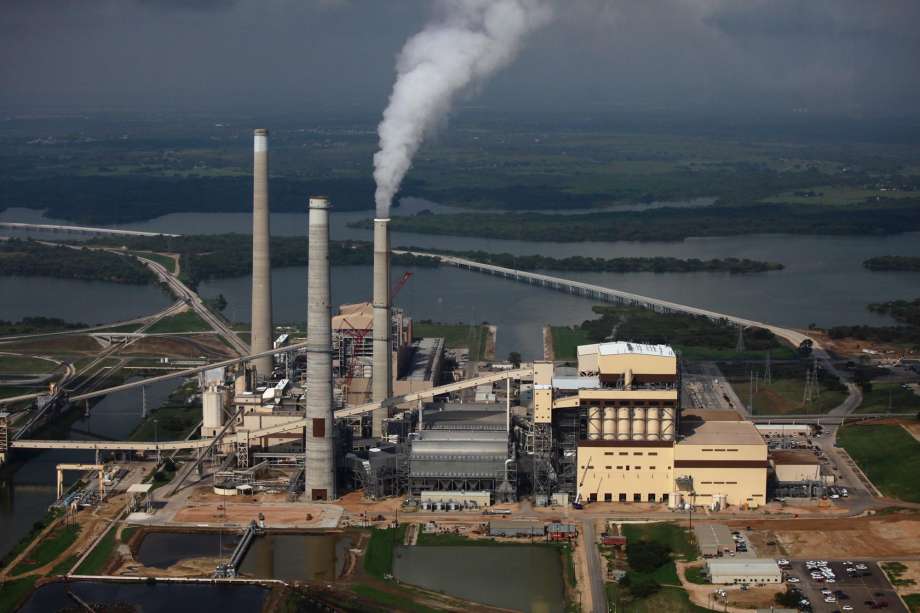
With both energy and water, San Antonio citizens have repeatedly shown their willingness to conserve more to avoid increased rates and mega project costs. Many will remember the big CPS push to build two more nuclear power plants (STP 3 and 4). Due to great community push back by Alamo SC and others, and the ultimate disclosure of huge hidden cost overruns, these were never built, and our rates continue to greatly benefit as a result.
In contrast, so far, Vista Ridge goes forward and large rate increases are planned. We see now more and more stories about SAWS desperately trying to find buyers for all the excess, unwanted, and expensive water Vista Ridge will bring us.
Climate plan off and running
The COSA CAAP finally is up and running and all are urged to get involved. This process if successful will profoundly impact and improve our city over the next few decades.
Especially for environmentalists seeking clean air, protected water, smart streets, transit options, low impact development and much more, the stakes are high and the opportunities tremendous. Please see our coalition's website, Climate Action SA, and CoSA's SA Climate Ready.
Listening to the public, more or less
The first Environmental Stakeholders Meeting with SAWS leadership was held March 27th. This is an outgrowth of similar quarterly meetings with CPS Energy that have occurred for almost 10 years since the STP 3/4 battles. We hope the SAWS meetings will become regular quarterly events involving a number of groups from the community and prove equally helpful in enhancing dialogue.
On February 28th Ana Sandoval, Councilwoman for District 7, filed a Council Consideration Request titled “Advancing City Public Participation”. We very much applaud this effort.
We especially hope that this will apply to CPS also. CPS operations, other than our stakeholder meetings, are much less open to the general public. CPS Board meetings publish agendas, but no minutes, and there are no opportunities for citizens to be heard. CPS has a Citizens Advisory Committee, with a member appointed from each Council District. However, no contact information for these individuals is provided, and their meetings are not open to the public and no agendas or minutes released. SAWS' Board & CAC actually do much better in public disclosure and opportunities for public speaking.
We need City Council and Mayor to take a much more active oversight role with our utilities. Currently, their main input is in voting for or against rate hike proposals. However, as publicly owned utilities, SAWS and CPS are accountable to citizens for more than just a substantial portion of our city budget.
Their policy decisions, in choosing sources of power or water for example, have far reaching implications to city development, public health, etc. as well as utility rates. Both utilities need to decouple their rate structures so that their financial integrity can be maintained, the city budget supported, and conservation efforts be promoted without negatively impacting utility revenues.
Endangered species - now with even more endangerment
Efforts are underway in Congress to eviscerate the Endangered Species Act (ESA). Not to be outdone, Trump has appointed Susan Combs, Texas's biggest enemy of endangered species, to head the U.S. Fish & Wildlife Service. See Trump Appoints Endangered Species Foe to Oversee Protection of America's Most Imperiled Wildlife for more about this appointment.
Meanwhile, in Texas, the right-wing TX Public Policy Foundation is suing, on behalf of the State, to delist our Hill Country's golden-cheeked Warbler. In addition, Secretary Ryan Zinke's Fish & Wildlife Service wants to delist the black-capped Vireo. With these ESA protections removed many additional areas in the Hill Country will be open to the "scrape the hill bare" approach favored by large corporate builders.
Alamo Group to celebrate 50th birthday
The Alamo Sierra Club will celebrate its 50th anniversary in a social gathering at the ranch of member Olivia Eisenhauer on East Binz Englemann Rd, at 5pm on Saturday, May 19th. Please plan to attend, bring a chair and some food or beverage etc. Contact me for details.
by Terry Burns, M.D., Alamo Group Chair
Sustainability Planning
This month, our General Meeting presentation is by students in the graduate Urban and Regional Sustainability class at UTSA.
Tuesday, April 17th
6:30 p.m.
William R. Sinkin Eco Centro, 1802 North Main Avenue
Map
These students will, again this year, present their sustainability recommendations for San Antonio. The class is part of the Urban and Regional Planning Program within the UTSA College of Architecture, Construction and Planning. These graduate students have spent the semester reviewing sustainability issues as well as plans from various cities.
Based on their research and their knowledge of San Antonio, they have developed sustainability recommendations for our city. This has been an informative and lively program in the past and is expected to be again this year.
March for Science
On April 14th, science marches on! March for Science - San Antonio is coming that day to promote and advance science and the scientific process. Come join us as we march from Jefferson High School to Woodlawn Lake and back.
March for Science - SA
10 a.m., April 14th
Thomas Jefferson High School, 723 Donaldson Ave.
website
We hope to make science more fun for students so that they want to engage their minds in a field of science. In addition, we are reaching out to teachers to enlist their support in getting the word out to everyone.
These distinguished speakers will be featured at the march: Dr. Rodolfo Jimenez, Jr. (Cellular and Molecular Biology/STEM Education), Dr. Marina Suarez (Geology) and Dr. Stephanie Perez (Neuroscience).
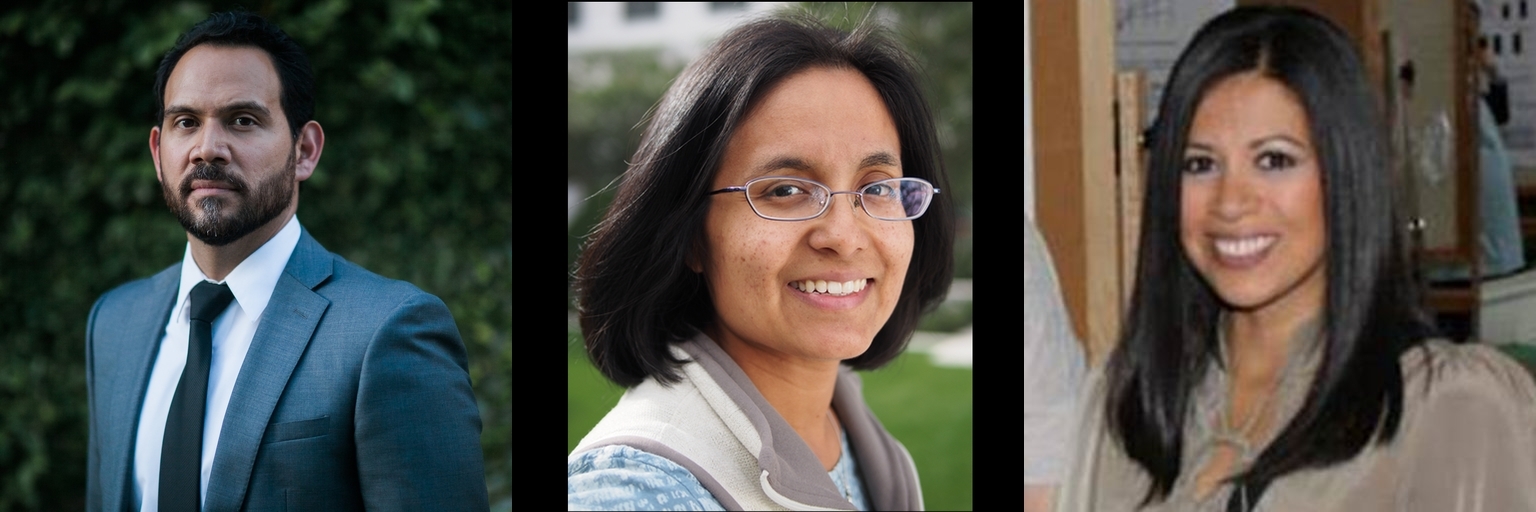
I encourage you to visit our Facebook page and get your free Eventbrite tickets. This will give us a headcount for the VIA transportation from Wonderland Mall. Anyone who wants to participate in the March can try to park around Jefferson High School but the easiest parking will be at Wonderland where there will be buses going to the march.
Please share with your students and feel free to call me at (210) 846-7488 with any questions. For additional info, visit the national March for Science website. Thank you.
by Karen Seal, Alamo Group Facebookmaster
Travelogue about Climate Change
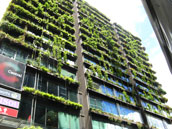
This month, our Lions Field event will be an illustrated travelogue of southeastern Australia. Conservation Committee Co-Chair Meredith McGuire's presentation will focus on what she learned about water and climate change with lessons for San Antonio.
Thursday, April 26th
6:30 p.m.
Lions Field Adult Center, 2809 Broadway @ Mulberry
Use VIA bus route 9 or 10
Map
This event is free and open to the public.
Craters of the Moon National Monument
It's likely that fewer than 1% of the US population have heard of this place. I had not, until cruising maps looking at the green blobs. This is the location of the Great Rift (the one in the US), which stretches across 52 miles of serious volcanic terrain resulting from eight eruptive periods 15,000 to 2,000 years ago, totalling 618 square miles.
This monument is a portion of a larger area known as the Snake River Plain, which experienced volcanic activity 16 million years ago. It is a designated International Dark Sky Park. It is in southern Idaho, between Boise and Pocatello. Here's an extensive Wikipedia article.
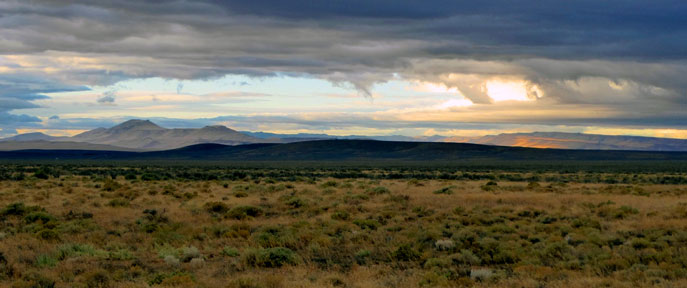
Getting around and staying at the monument
Craters of the Moon, with elevations averaging 6,000', is open year-around. The nearest town is Arco (population 1000), 25 miles away on US 20/26.
It features a nice campground and visitor center, and a bunch of trails. There is a great loop drive which is closed for brief periods during winters. A number of lava tubes are easily accessible, and some others require careful planning, equipment and extra care and determination.
I experienced a pretty good visit in late September, 2017 after driving in from Oregon. There are really great views up the mountain ranges in Boise and Sawtooth National Forests to the north on US 20, east of Boise. I bet there is just a bit of nice hiking up there.
On my last day in Craters of the Moon, a few hours after the two pictures below were taken, a steady light rain began that lasted until I crossed the Utah state line the next morning. My leaky tent and gear all dried out nicely the next day in Grand Staircase-Escalante National Monument in southern Utah.
Visiting in winter
Thinking of a winter visit? There's a nice picture of a winter scene in the Wikipedia article. It looks like skiiing and snowshoeing heaven to me, and the campground is open! Here's the park's page about wintertime activities.
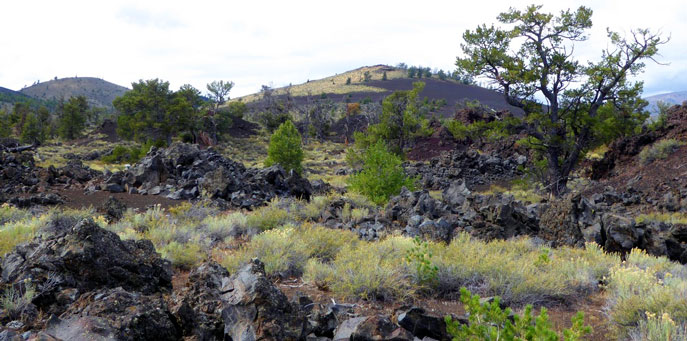
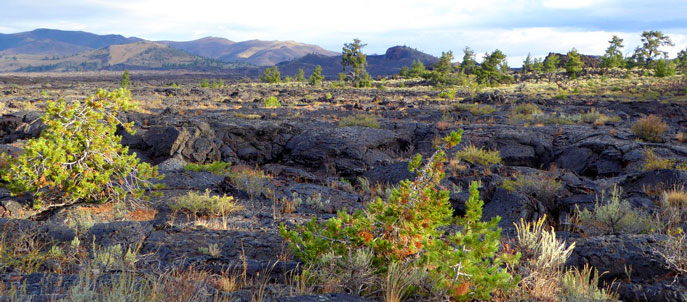
by Kevin Hartley, Alamo Group Outings leader
Plan for Better Stormwater Management Submitted to City
A team of experts convened by the Greater Edwards Aquifer Alliance (GEAA) has sent a report to the City of San Antonio detailing recommendations for better managing stormwater. Our findings were distributed to the Mayor and San Antonio City Council on February 22, 2018.
GEAA will continue to advocate adoption of these recommendations by the City of San Antonio, and are grateful to Mayor Nirenberg and members of City Council for prioritizing this issue. I encourage you to read our Position Paper and Recommendations for Managing Stormwater and this story about them in the Rivard Report.
by Annalisa Peace, GEAA Executive Director
Climate Action and Adaptation Planning: The Heat Island Effect
San Antonio has “signed” onto the Paris Climate Accords, pledging to reduce greenhouse gases dramatically and as quickly as possible. The Alamo Group of the Sierra Club is actively promoting the changes necessary to realize those goals, and several of our members have been appointed to the technical working groups and Steering Committee.
SA’s planning process involves planning for both Climate Action (i.e., measures to take for cutting greenhouse gas emissions to net zero by 2050 or earlier) and Climate Adaptation (i.e., measures that reduce the negative impacts of the climate change already happening and increase the resilience of the people of San Antonio in the face of extreme weather events).
All residents can participate in the planning process by attending public engagement events over the next several months, but let’s not wait for the official plan to be finalized. Let’s learn about all the practices and changes that we can put into effect in our homes and neighborhoods - starting now. Some of the problems can’t be dealt with separately, though, so let’s also learn about what would be necessary to help all parts of San Antonio cope with those negative impacts.
Extreme heat is one of the most dangerous impacts of climate change. For instance, in 1995, Chicago experienced 11 days and nights of unusually hot weather, resulting in an estimated 739 heat-related fatalities. Those deaths were not spread equally around the city. Rather, they occurred disproportionately in impoverished neighborhoods, where residents had no air-conditioners or could not afford the electricity to run them.
Those neighborhoods were also especially hot, because they were essentially asphalt (or concrete) jungles, with nearly no trees or other plants to cool the environment or clean the air. The streets and roofs absorbed the sun’s rays and radiated heat all day and night.
Nearly all cities experience the “Heat Island Effect,” at least to some degree, due to the fact that streets and buildings, densely situated in a city, replaced acres of vegetation – especially trees – that cool the natural environment through the process of evapo-transpiration. This heat island map of San Antonio shows where the highest heat areas exist.
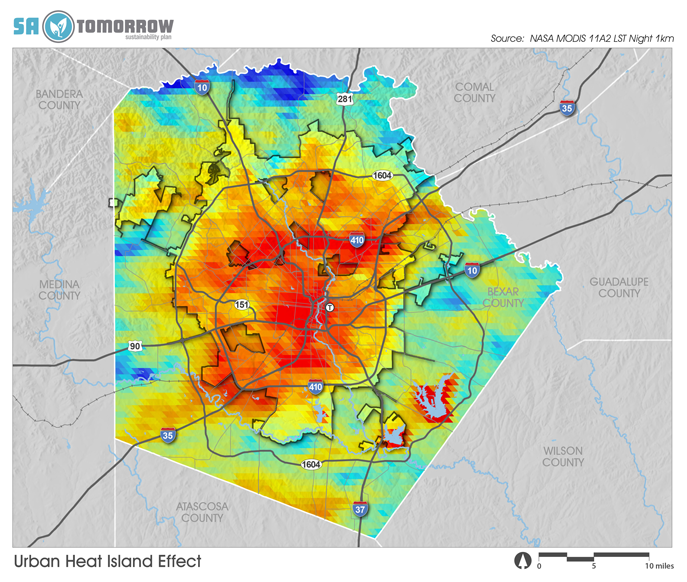
How badly does your neighborhood fare on this scale? What can be done about the built environment to reduce heat-island problems? San Antonio has recently done a pilot project in Council district 1 to put reflective white paint over darker colored roofs. It was so successful that the practice is being encouraged more widely. Even better, are green roofs which insulate the house with soil and living plants, and they capture the rain for use by the plants and for a rain cistern below, so they prevent runoff and water pollution.
Some cities are removing impermeable surfaces, like cement playgrounds, and replacing them with trees, community gardens, and mulch-surfaced dirt playgrounds. San Antonio is already committing to planting more shade trees, but the best adaptation strategy would be an integrated plan. By combining the budgets and coordinating the efforts of several municipal and NGO entities, our city could multiply the effects, simultaneously:
- reducing the heat island effect,
- dealing with health and safety problems due to flooding by capturing and using rainwater to water gardens and new shade trees, and
- reducing the dumping of yard-trimmings as waste by turning them into compost for the new trees and swales that slow and sink stormwater, filtering it as it goes into the aquifer where it adds to the potential water supply.
See this video about a neighborhood in Los Angeles that has enjoyed just such an integrated approach to its problems.
Because San Antonio is now emphasizing an equity “lens” thinking about new policies and practices, the Climate Action and Adaptation Plan will be looking for ways to reduce the impacts of climate change on neighborhoods with lower incomes. Many of those neighborhoods already have disproportionate amounts of dangerous flooding (because they were built in the flood plains of creeks while better-off neighborhoods were built on higher ground).
They also have fewer shade trees and less space for growing food or other plants (think: evapo-transpiration!). Some of those neighborhoods have been further impoverished by having to pay regressive taxes and utility rates, while people’s incomes have stagnated and not kept up with the rising cost of living.
Poverty wasn’t the only social factor in those Chicago heat wave deaths, though. Although all elderly persons were especially vulnerable to the physical impacts of extreme heat, sociological research showed that equally impoverished senior citizens in some neighborhoods fared much better than others. A key factor was social isolation. In neighborhoods where people knew and trusted other residents and looked out for each other, far fewer medical emergencies and deaths occurred in that heat wave.
Many lower-income neighborhoods do a better job of caring for neighbors who need help than upper-income neighborhoods do. One of the best outcomes of San Antonio’s Climate Ready campaign could be building a real sense of community. When the next serious drought comes, will San Antonio residents remind themselves: “We’re all in this together!”?
by Meredith McGuire, Conservation Committee Co-Chair

Outings: The Call of the Wild
Visit the Alamo Sierra Club Outings page on Meetup for detailed information about all of our upcoming Sierra Club Outings.
The Alamo Sierran Newsletter
Richard Alles, Editor
Published by The Alamo Group of the Sierra Club, P.O. Box 6443, San Antonio, TX 78209, AlamoSierraClub.org.
The Alamo Group is one of 13 regional groups within the Lone Star Chapter of the Sierra Club.
Keep your email address current!
Send updates to Loyd Cortez, providing your name, address and membership number (if known).
Changed your mailing address?
Have you moved? Let us know by sending your old address, your new address and your member number (look on the upper left corner of your mailing label) to: address.changes@sierraclub.org.
Go online for the latest news and events
 |